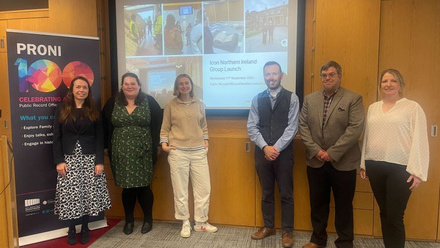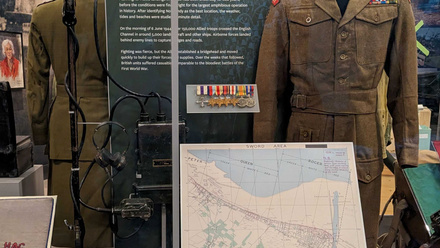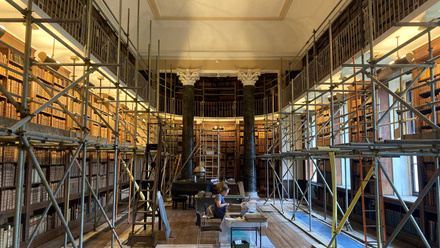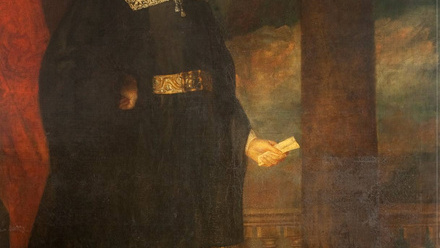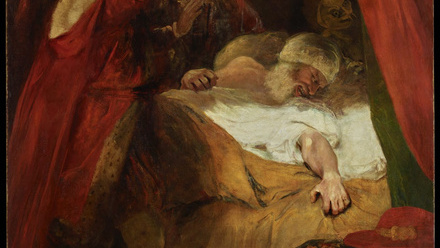A saltwater crocodile discovered under the floor - not under the sea!
Working as a natural science conservator, it is very often that you have a large project to work on, but for whatever reason, you cannot talk about it until it has been handed over. This happened with my most recent project which kept me pretty silent for over 2 years. It started in September 2019 and for various reasons, including lockdown, it remained a secret until January of this year…but once out it was splashed all over the news. Not so much for the conservation work that was undertaken which was pretty extensive, but because of the story which was rather fascinating and caught the imagination and is still continuing to do so.
I was not aware of the whole story whilst I was working on the crocodile, but this emerged after the specimen was put on display.
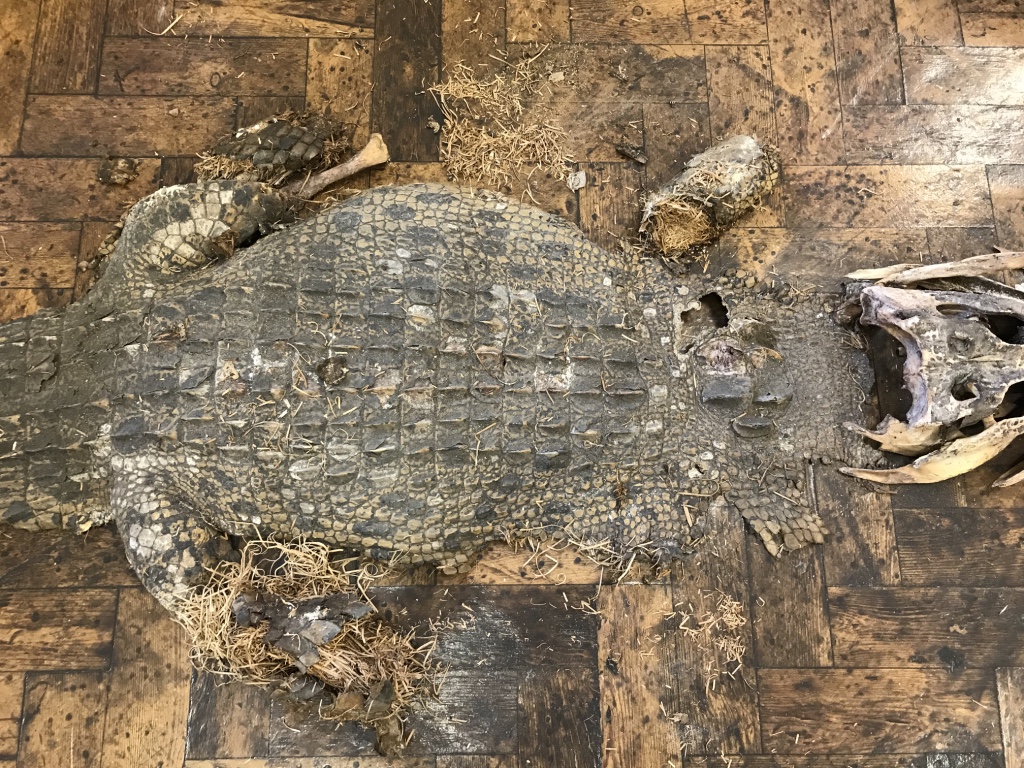
Discovering the crocodile
The understanding is that a soldier returning from the great war, brought back with him this mounted specimen of a saltwater crocodile.
It was offered to Ysgol Gynradd Gymraeg Bodringallt, a Welsh speaking primary school in Pentre in the Rhondda valleys. Again for no known reason, the crocodile was placed beneath the school’s floorboards. I was told that this might have been to protect it from damage from future conflicts.
During the school holidays of 2019, workmen were updating areas of the school, and on lifting the floorboards uncovered the remains of the crocodile. It was at this point I was contacted. I saw the photos and thought that of course I could do something, but with so little remaining, would it be to the expectations of the school, the council and most importantly, the children.
I went to collect the specimen in September 2019, when no children were around to catch a glimpse of it or see it being whisked away. It was apparent on seeing the specimen, that it had been moved a few more times compared to the original photographs. It had been reconstructed with the jaw put back together for a press photo back in August and it is possible that more pieces including claws and teeth were lost.
I lifted the specimen and retrieved every last scute and scale and returned to my studio in Carmarthen. There had been no deadline set at the start, but I knew this would be a lengthy process and I needed some time to come up with a suitable conservation plan to stabilise the fragile skin and surface and to mount it in a way that would engage the children, but keep the integrity of the specimen by not adding replica parts.
Planning the work
I had visualised how the crocodile would eventually look, and the best person to discuss it with was my good work colleague and friend Annette Townsend. Having worked together at the National Museum of Wales for 20 years, we have developed an exceptional working rapport. Since leaving the museum, Annette has become a professional artist, exhibiting in the US and Europe. She has also exhibited in London at prestigious events such as Collect and is featured in all the good glossy magazines even appearing on Countryfile…twice! This is great for Annette, but trying to find a time to start working on this project together was really difficult. We finally agreed a date shortly after her exhibition in London, and within a week following this we were in lockdown.
Prior to lockdown, I had begun carrying out research into the specimen itself and its condition. It was understandably extremely filthy, it had soil and dust and cobwebs embedded between the scales. The entire specimen was grey with dirt and there were many loose scales and pieces of skin. The specimen was friable and vulnerable to any movement but also was displaying rodent nibble marks on the bones. To ensure that no remains of a pest’s life cycle remained within the skin and scales, the specimen was bagged and frozen at -20˚C for 72 hrs. On reaching equilibrium it was then examined further.
The story of the returning soldier tallies with the age of the specimen too, as this particular specimen has undergone taxidermy using arsenical salts, which are visible as clumpy white patches, but also because the bones have been incorporated into the taxidermy specimen which in this type of a mount is unusual and therefore dates the specimen being mounted to pre 1900. This was confirmed by Russell Oxley of Taxidermy Emporium Ltd.
Having observed the white powder on the specimen, it was decided that the bones and skin were analysed. It became a priority as it was going back to the school and therefore could not be a potential hazard.
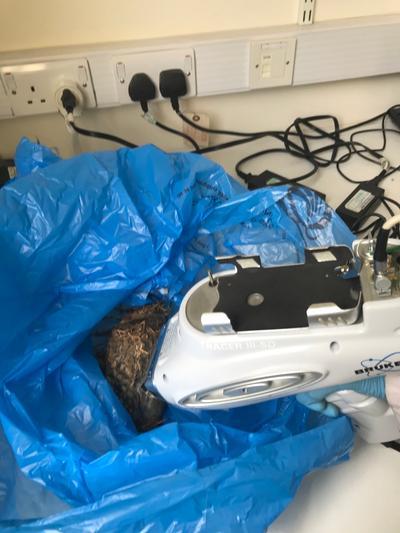
For inorganic analytical work, I use the National Museum of Wales’ hand held XRF (x-ray fluorescence) analyser and this particular instrument has been further calibrated for arsenic, mercury and lead. I was able to analyse both the bones and skin and it was clear that the level of arsenic was very high, 1400ppm for the bones and 1100 ppm for the skin. This data has helped gauge how I should proceed with the cleaning and conservation of the specimen. It was important that this information was gained at the start of the project as it also decided how the specimen would be displayed in the future.
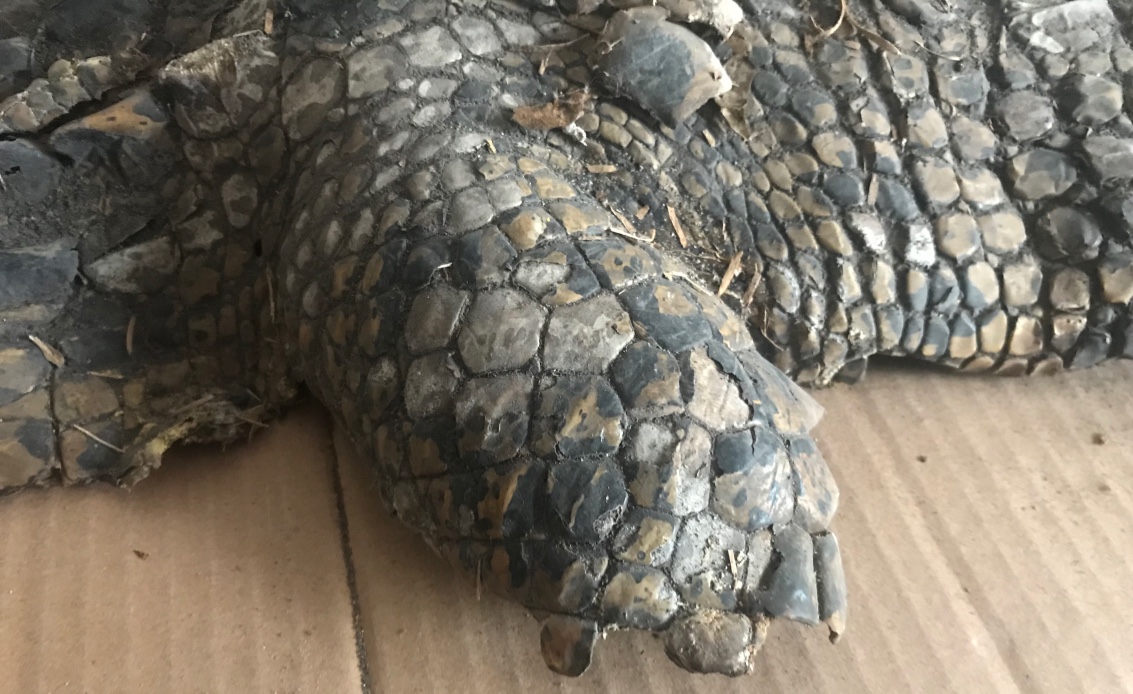
The top of the right back leg, highlighting the dry, lifting, cracked, and lost upper layers
Treatment
The surface was excessively dry, almost every scale had lifted or cracked allowing dirt and soil to become embedded beneath.
The entire specimen was dry cleaned using a soft brush to dislodge dirt and frass into the nozzle of a HEPA vacuum. HEPA was used to ensure that no toxic dusts or moulds were reintroduced into the air. The specimen was also turned upside down so that the inside of the skin could be cleaned. There was a large amount of the wood straw attached to the skin and this was removed as it was degrading and attracting dirt. The small cuff of skin and scales that were found adjacent to the specimen was packed with wood straw. On examination, the skin was only held together by dirt as the wood straw had caused disintegration of the skin.
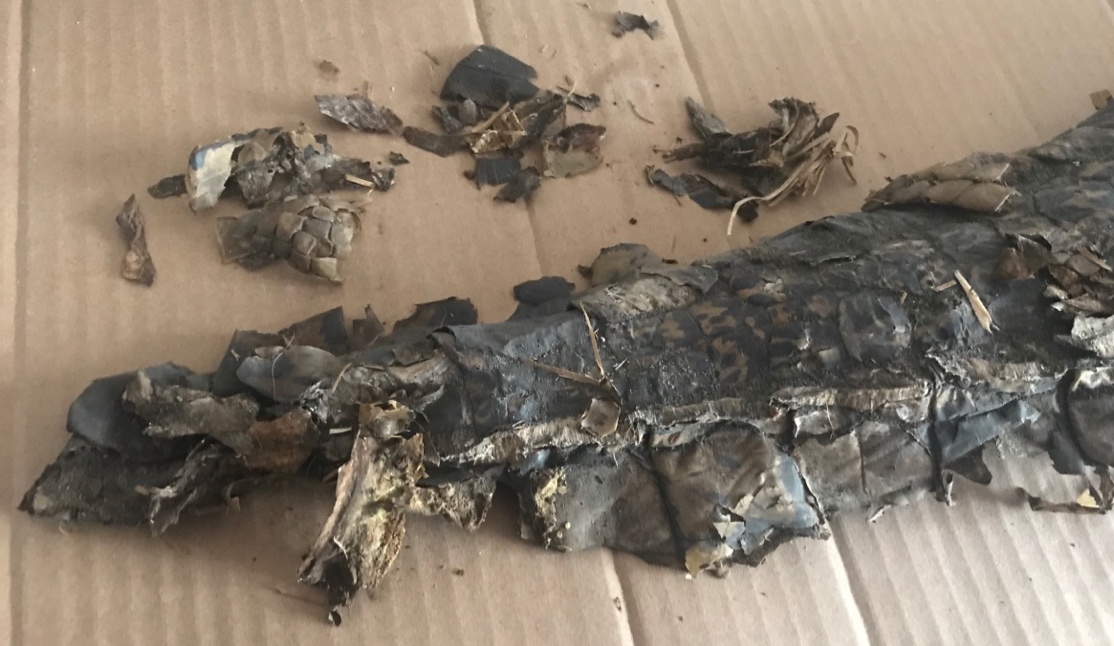
Following the dry clean, a wet clean was necessary. Initially it was an IMS and water solution to remove the ingrained dirt. This took two entire processes. The final procedure was to stabilise the loose scales and the very brittle and damaged nuchal scutes. Klucel G dissolved in isopropyl alcohol was applied sparingly over the entire specimen and this helped to stabilise the brittle and damaged surface. Unfortunately, the carapace of the crocodile was much deteriorated, much of the skin was missing and this meant the delicate scales were resting on the floor. Every time the crocodile had been moved previously, more and more losses occurred. Until the carapace was stabilised, parts would continue to become detached or break. The edge was built up using Japanese tissue and methyl cellulose to provide a support for the appropriate scales to be put back in place. This helped to build up the skin on either side and provide a less ragged appearance.
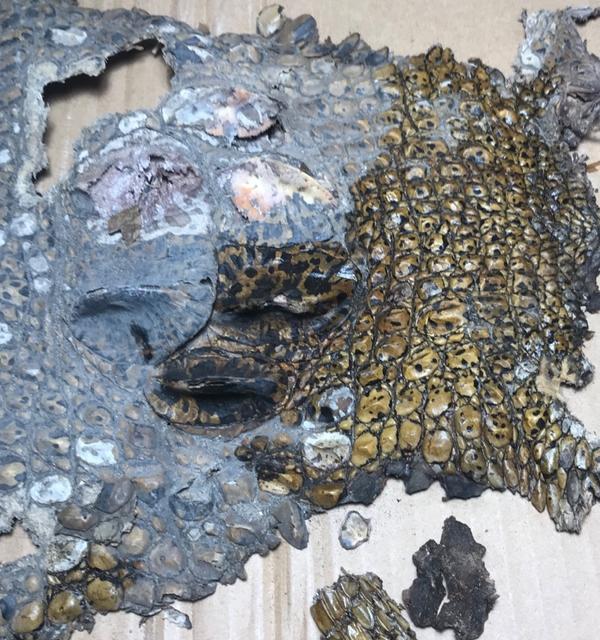
The skull was in several pieces and had much loose material, yet few teeth associated with it. The separate pieces were vacuumed to remove the frass, dirt, cobwebs and the cases of insects. There was also a lot of soil that had built up in the creases of the skin and in the skull cavity. Once all loose dirt had been removed the bone was cleaned with 50% IMS. This lifted a lot of the white arsenic salts and dirt. The process was slow and several entire cleans were required. Once the sections were clean and dry the skull was carefully reunited. Paraloid B72 in acetone was used to adhere the joins. The process of swabbing with IMS will also have the benefits of removing and therefore reducing the concentration of arsenic within the bones and skin.
The loose teeth had to be reconciled to the right sockets. This was not an easy task as many were lost and broken and crocodiles are polyphyodont, meaning they constantly replace their teeth and so new teeth are always present beneath the old. As a result, there were numerous small white teeth present, together with some of the original older teeth, so working out the right tooth, age and shape for the right socket was an exacting skill.
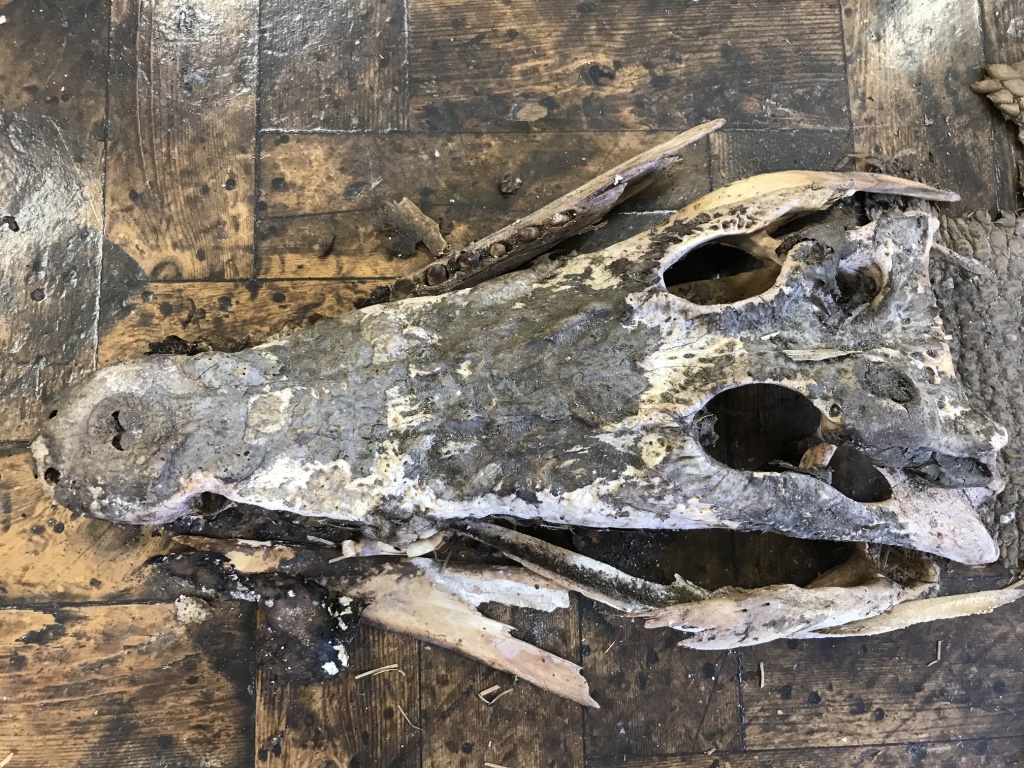
Once the teeth were married up, they were inserted into the cavities using acid-free tissue paper and methyl cellulose. This helped to pad out the socket so that the tooth didn’t disappear into the gap and could be positioned correctly. Once this stage was completed the skull and teeth were imaged and sent to a specialist, Rob Gondola (Crocodiles of the World) to see if he agreed with the placement, and happily he did concur. The teeth were then adhered in place using cellulose nitrate.
The aim of this conservation project was to celebrate what was left of this impressive animal and make the most of what remained.
Once the skin and scales had been cleaned, the colour and texture improved hugely and had gained greater strength and lustre. To show off the specimen to its best potential I had envisaged a pale form for it to rest over.
Together with Annette, we designed the shape and stance of the crocodile and cut a foam base. The carapace and skull had to be removed and replaced countless times to get the sizing and form accurate. The skull was slightly more difficult and took Annette’s ingenuity to develop a suitable support to allow the mouth to be open just enough to see the teeth and jaws.
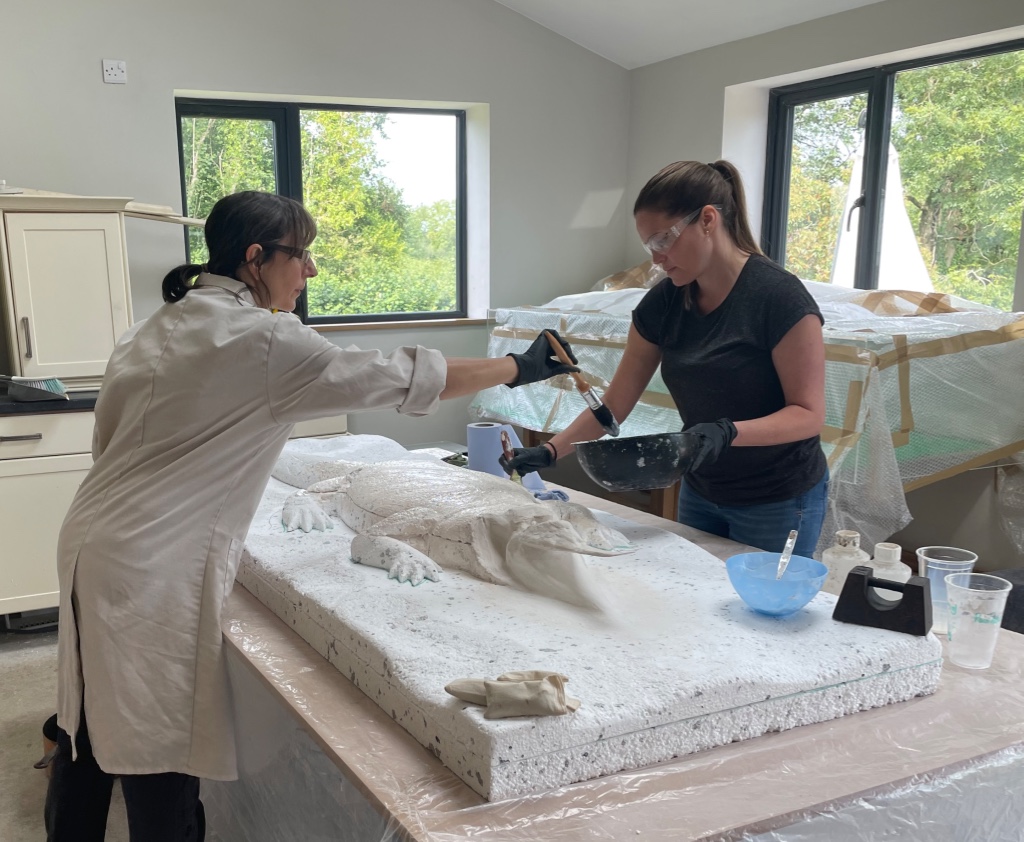
Once the carapace was comfortablly supported, the detail of the form was cut to make it more organic and the legs and feet were positioned to match the position of the remaining skin on the legs.
When the shaping was complete, the base was sanded smooth and approximately 20 layers of jesmonite applied.
A small Perspex display case was procured to exhibit the residual material. Every part that could not be integrated back into the specimen was kept and displayed. This included the three arm bones. These were interesting to see but would not have functioned so well if mounted back within the specimen display, however all the pieces of skin and minute teeth and scales have been kept and these are on display within the main case.
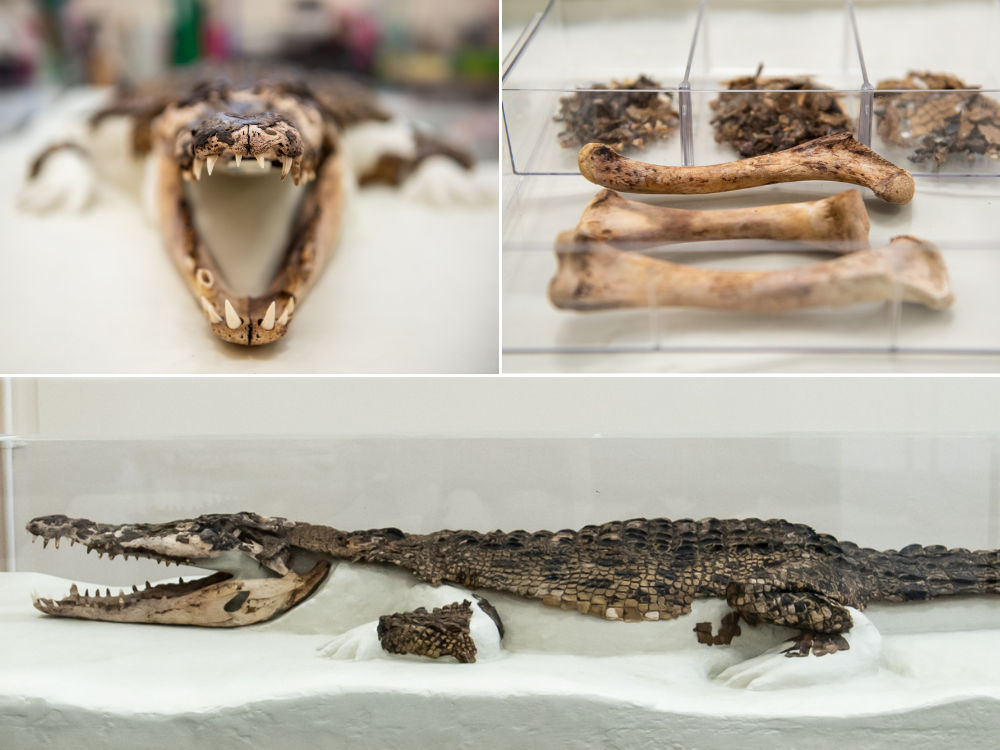
I am grateful to all my colleagues that supported me through this project and my new contact, Rob Gandola was extremely knowledgeable and a great help to me providing me with so much information relating to this species.
Although this specimen is an impressive 2m in length this is small for an adult which can reach 6 metres. It is expected that this is a young adult specimen of a salt water crocodile (Crocodylus porosus), of age between 5-10 years. This species is most commonly found on the coasts of northern Australia and the islands of New Guinea and Indonesia and is the largest of all living reptiles.
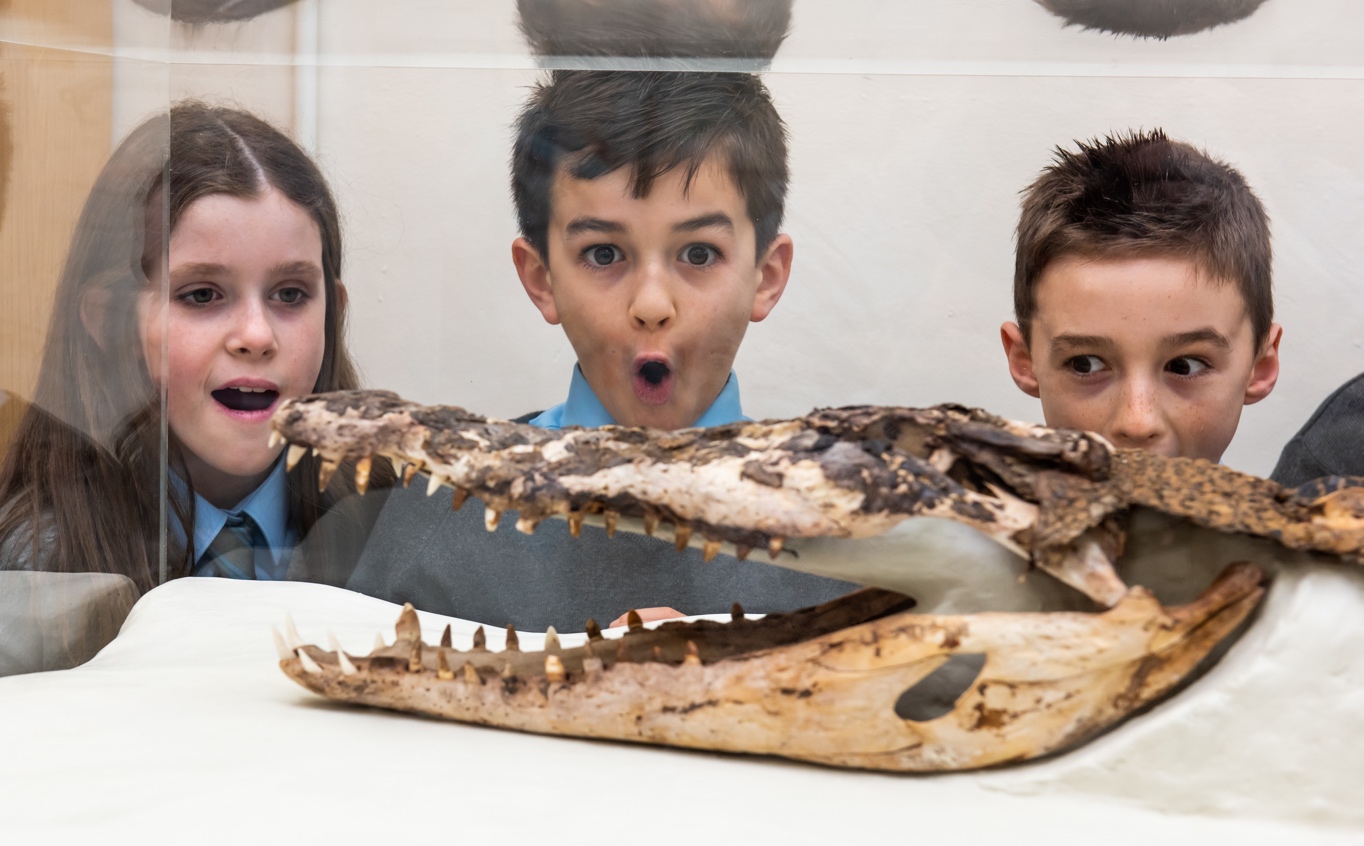
The kind of response I was hoping for.
by By Dr Victoria Purewal ACR of Pure Conservation in Carmarthen
You can read about how Victoria started a social conservation business (Connect-Conserve/Cyswllt-Cadwraeth Cymru) here.


